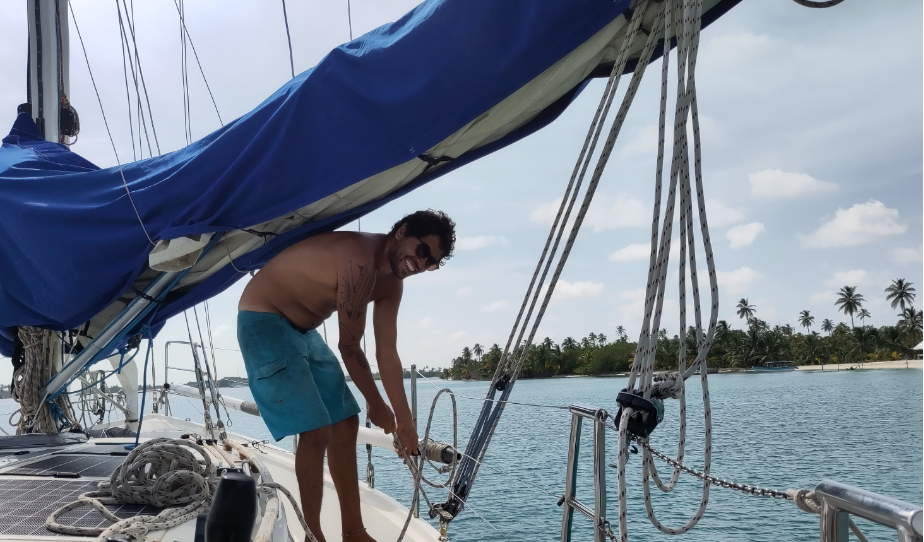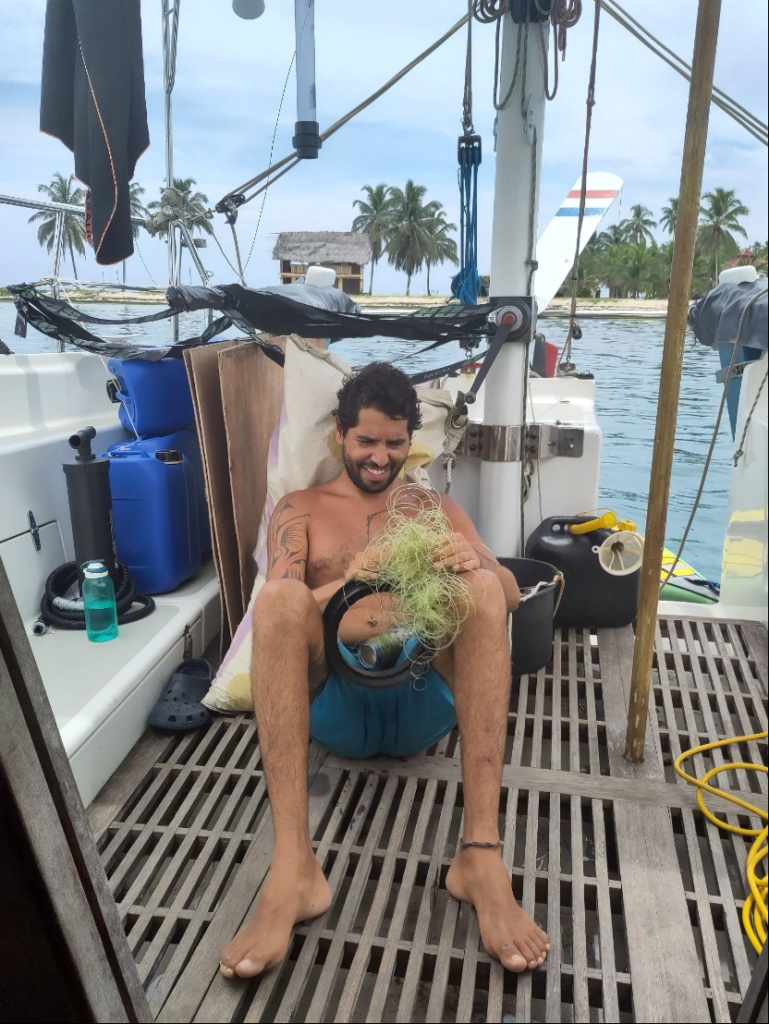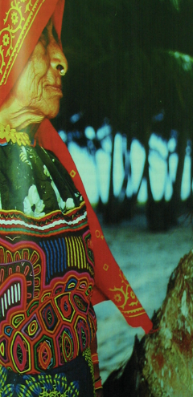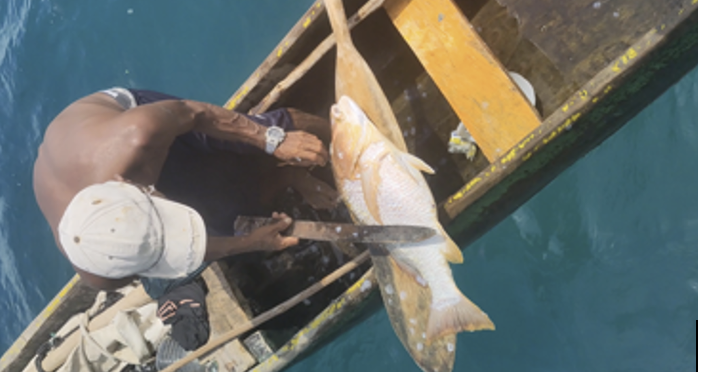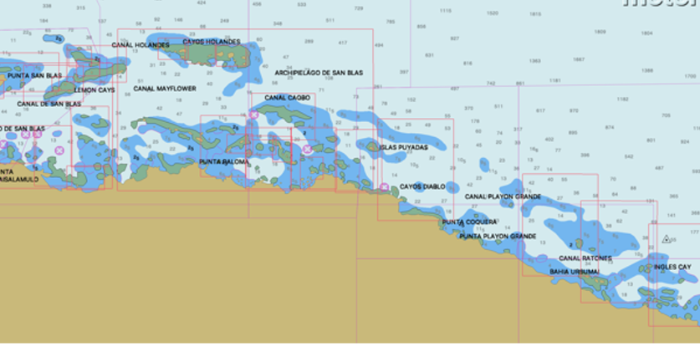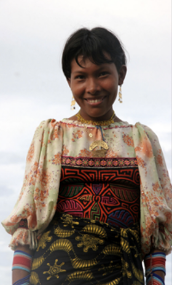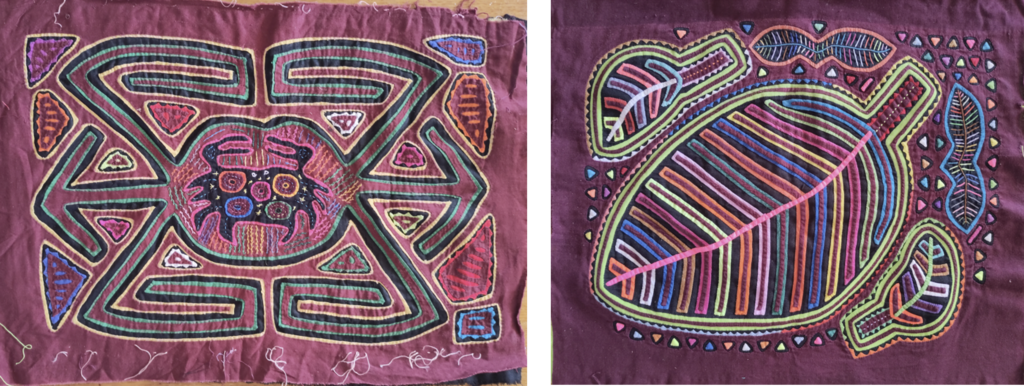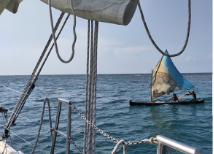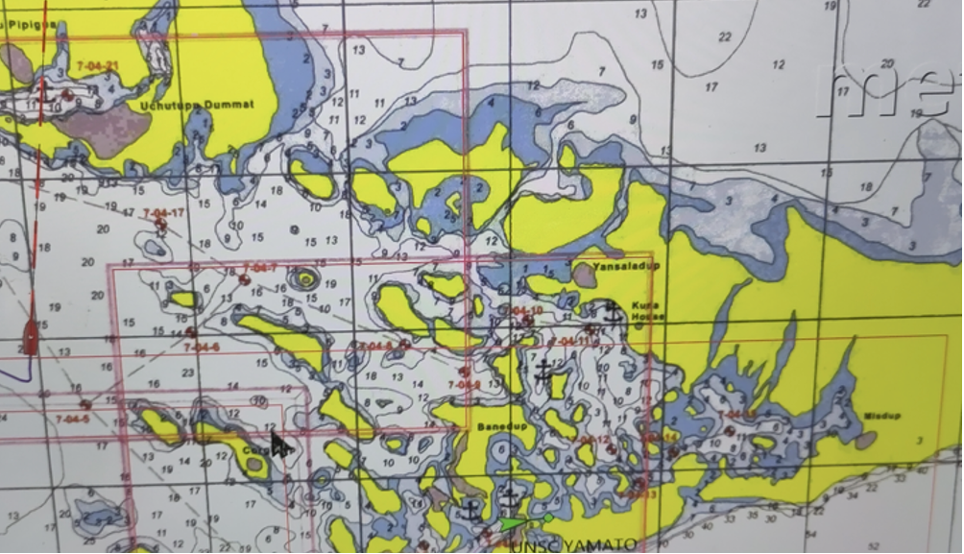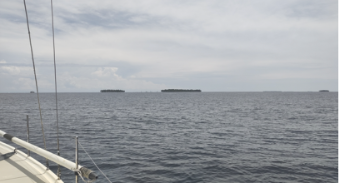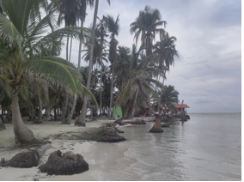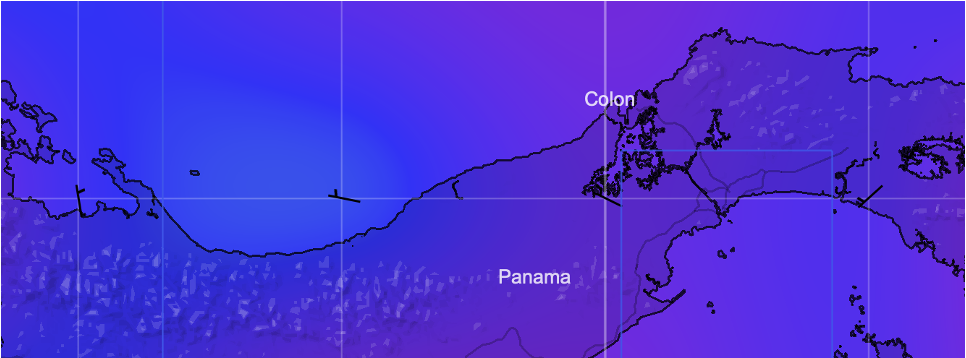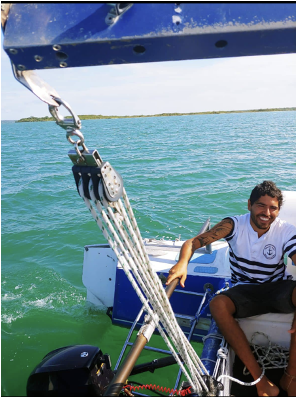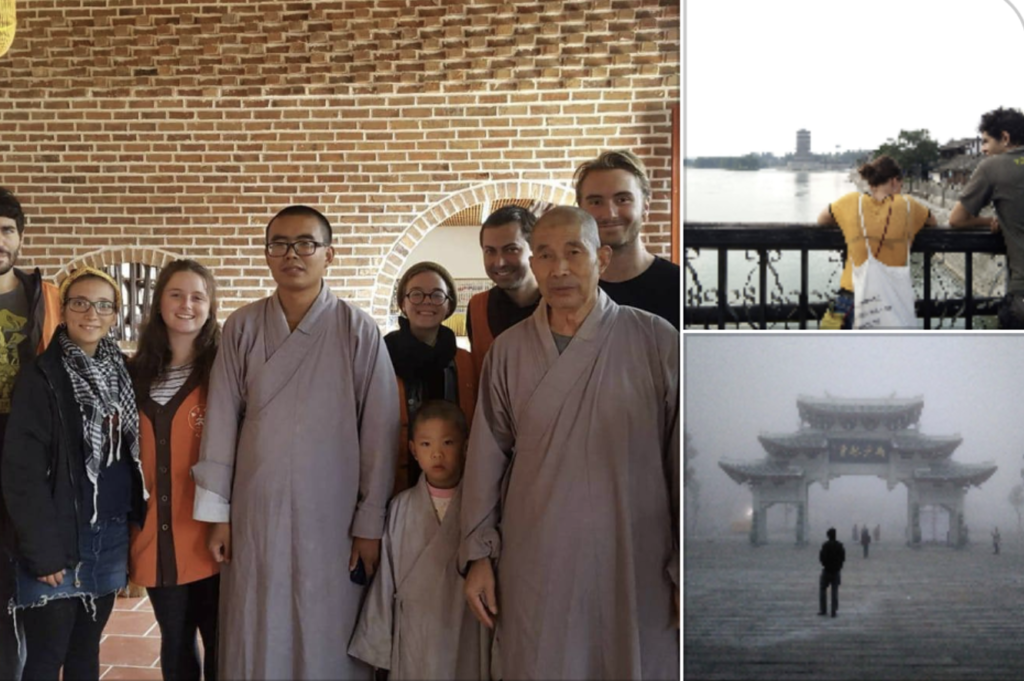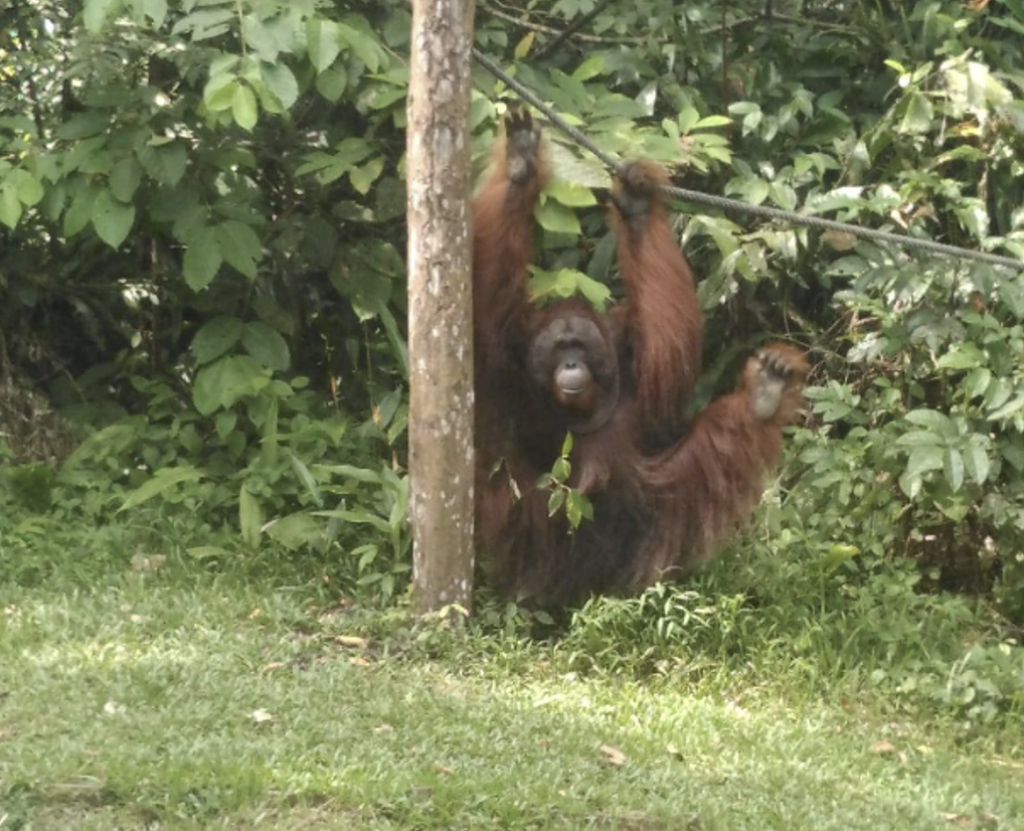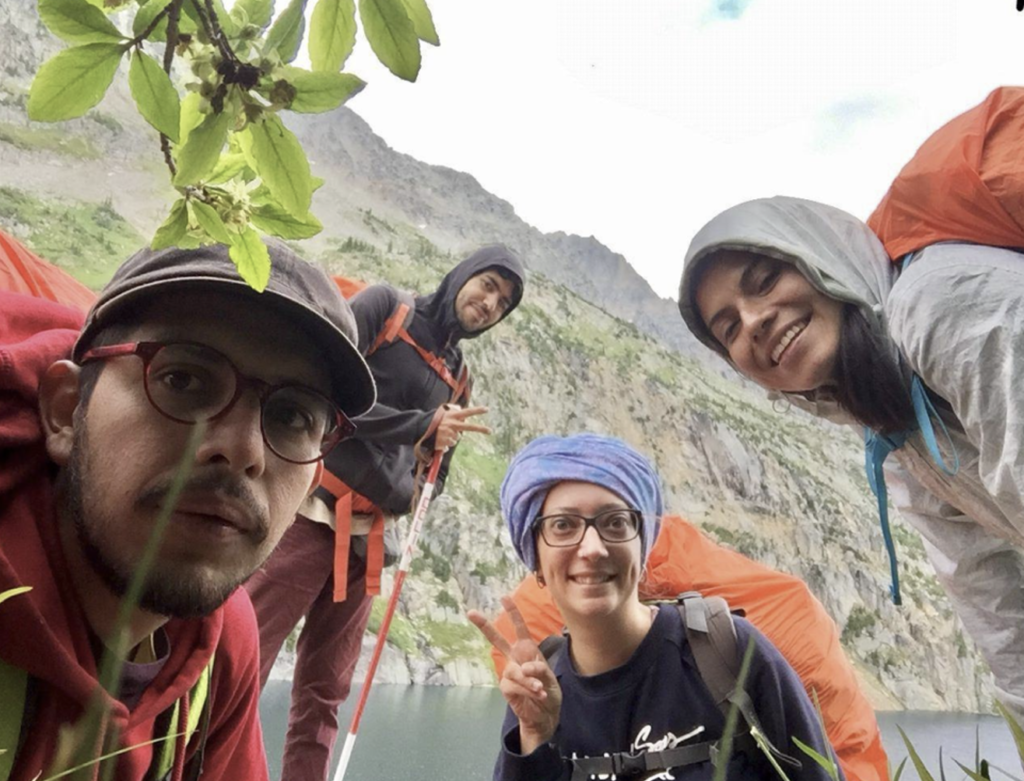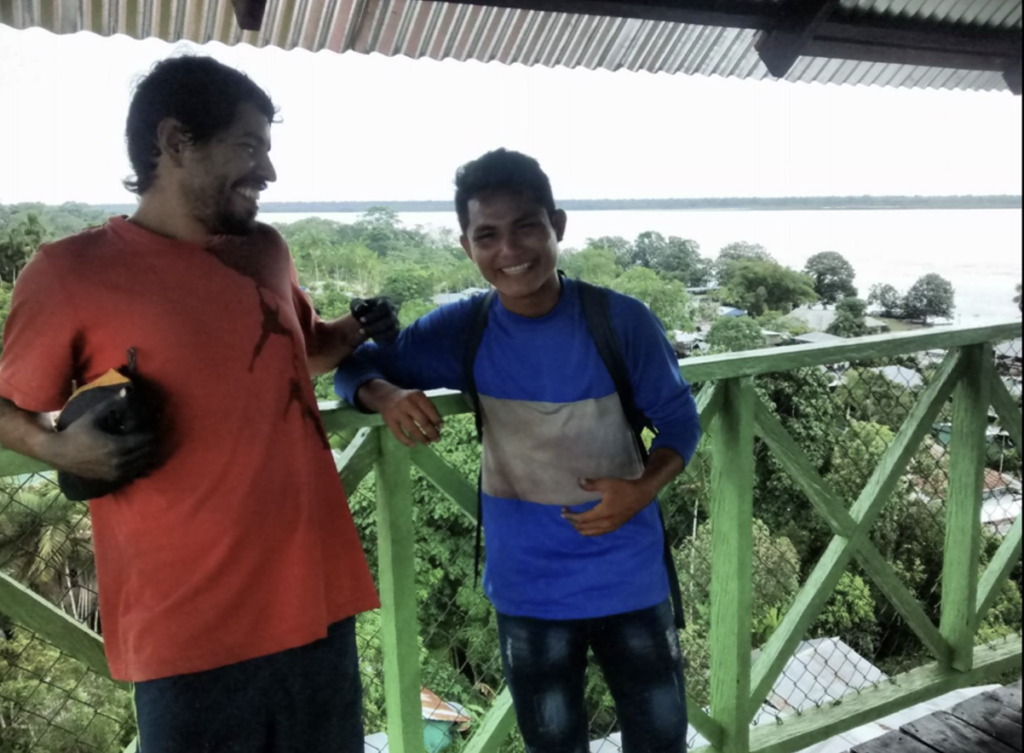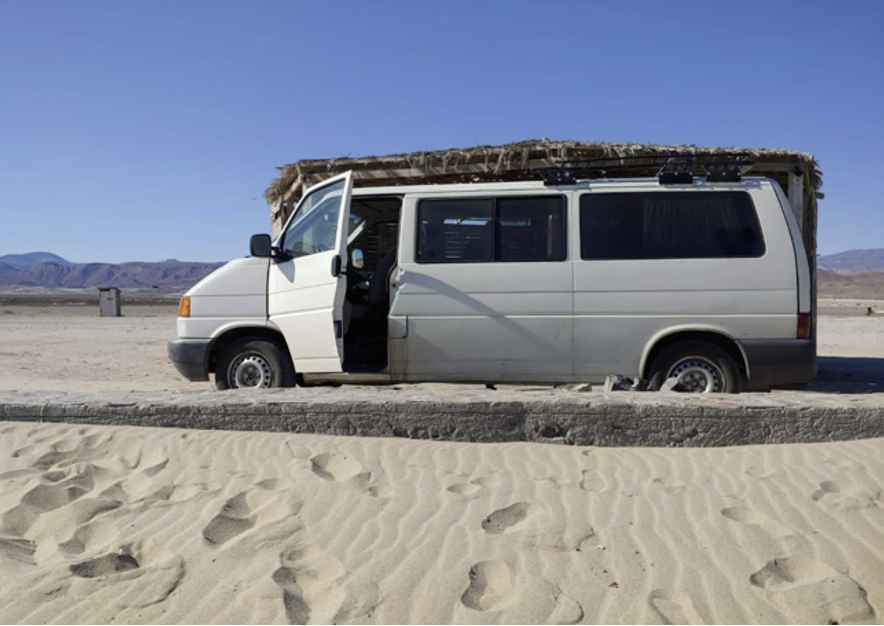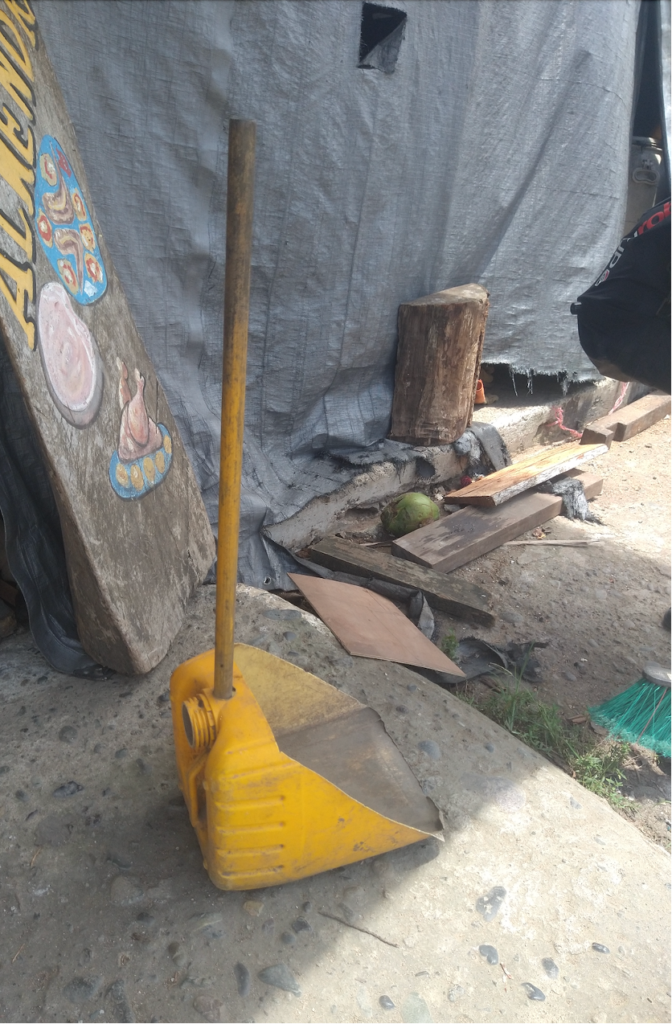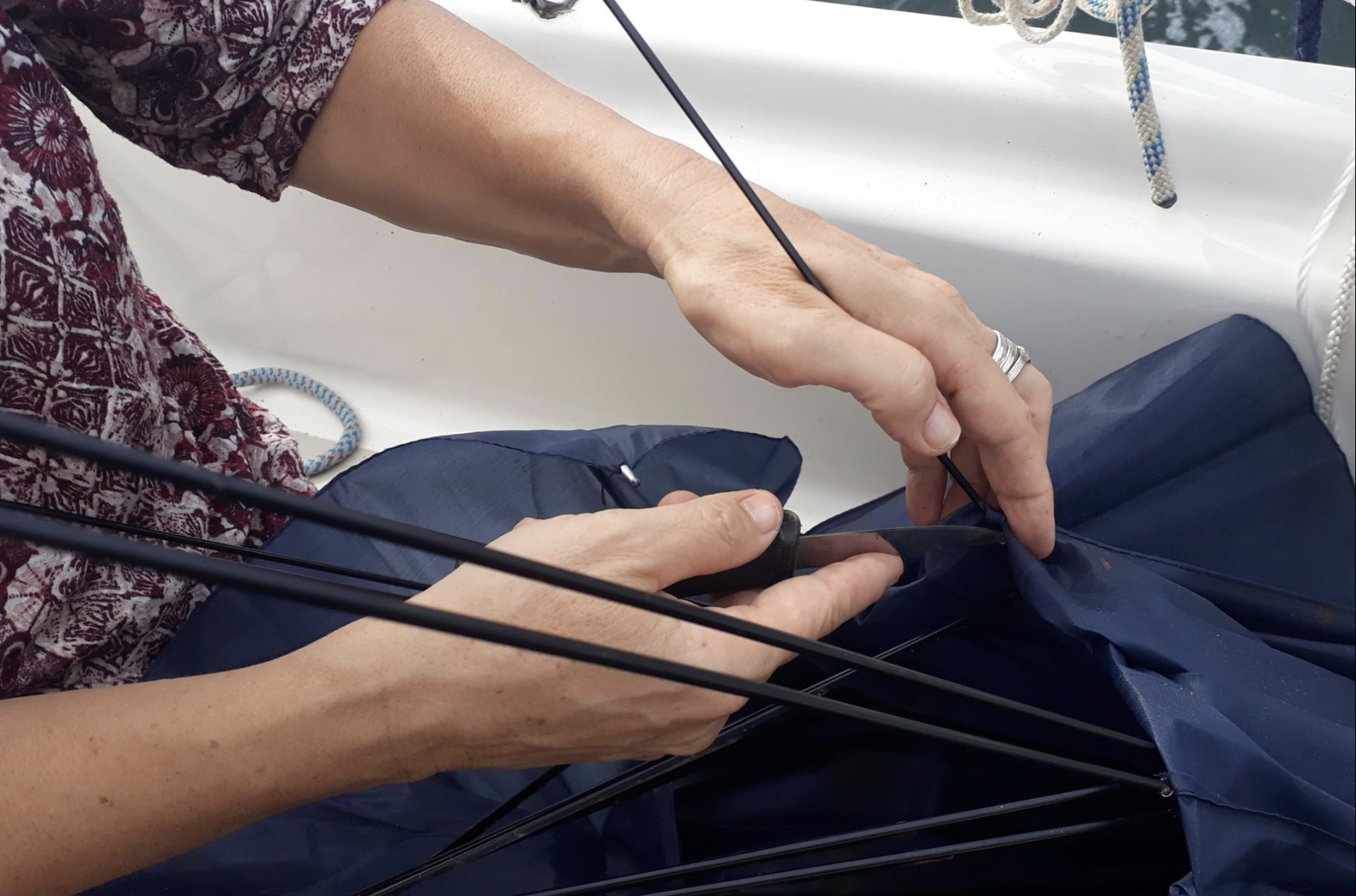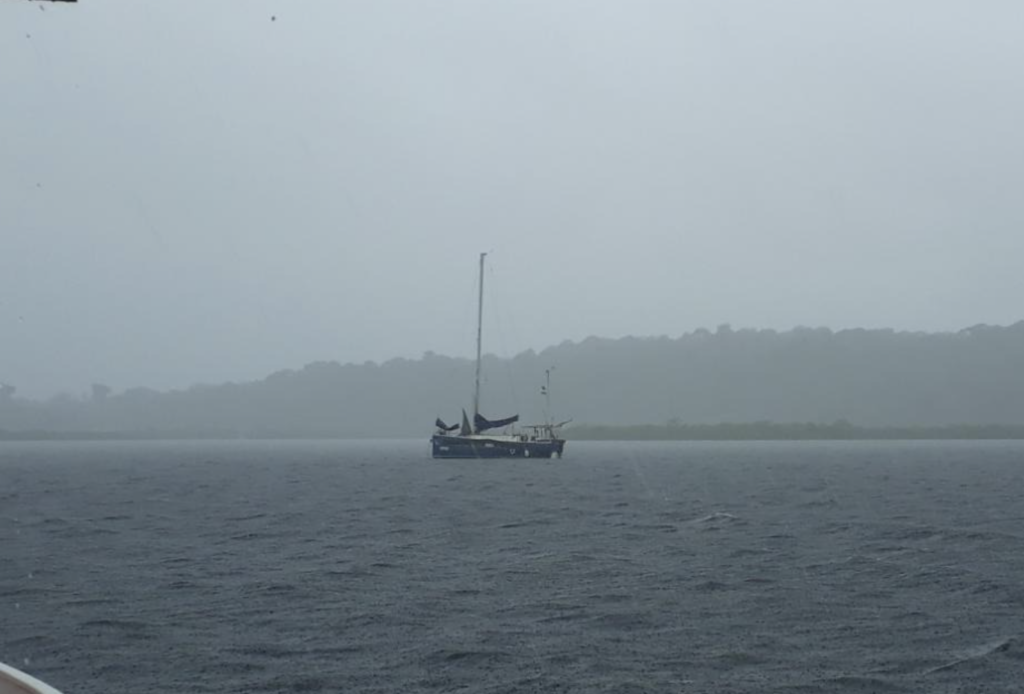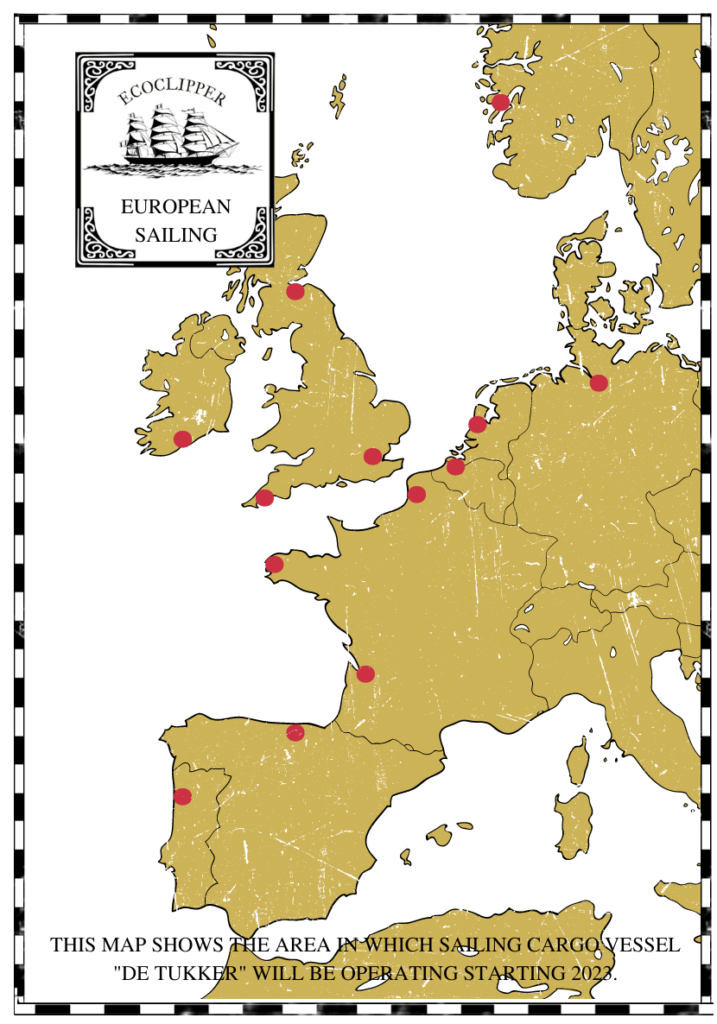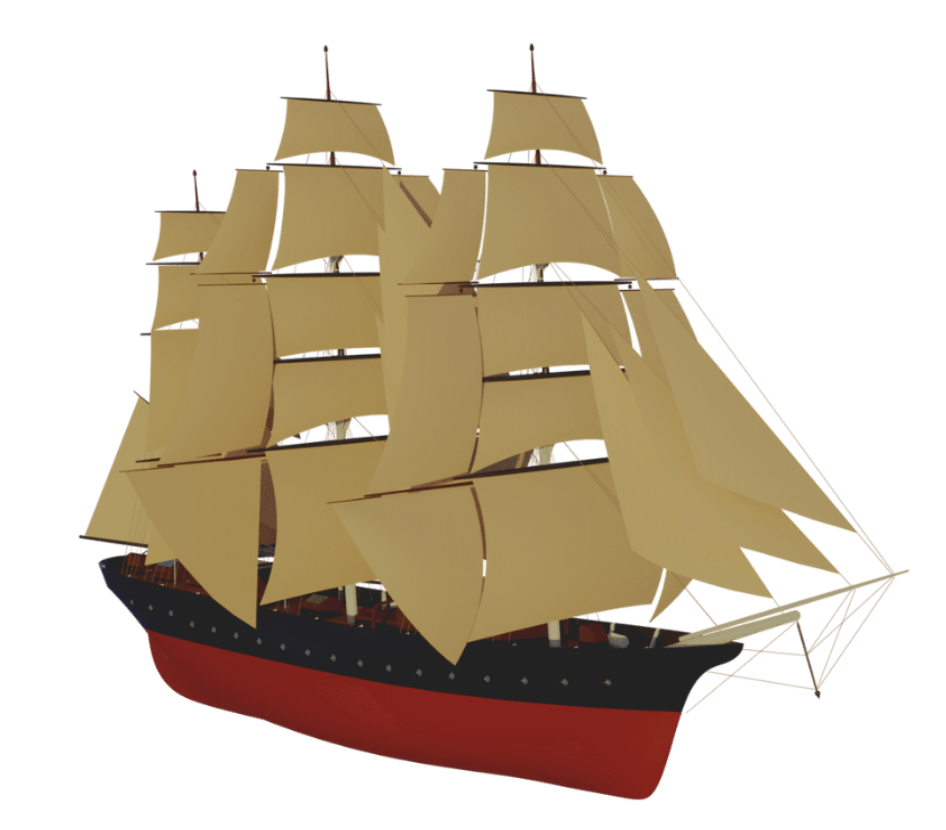Banedup is paradise island. That is the first impression when we anchored here, just near the beach to the south. It is part of the Cayos Holandeces, in the San Blas archipelago just north of Panama.

How is it to live here?
Janet lives and works here on Paderup for half a year now. Together with friends she runs a little grocery for the sailors, and offers internet through a satellite connection. A great opportunity for the sailors passing by, because it is the only stable connection to the internet here.
In the beginning it was hard work. Making the area free from trees and plants and building a house was not easy. But as you see, it has been done now!
Especially for Janet the start was not what she expected. Her friends lured her: “Just come for some weeks or so.” And she did. But it was silent, with only very sometimes an incidental guest. Once a week the lancha with groceries came. But that was all.
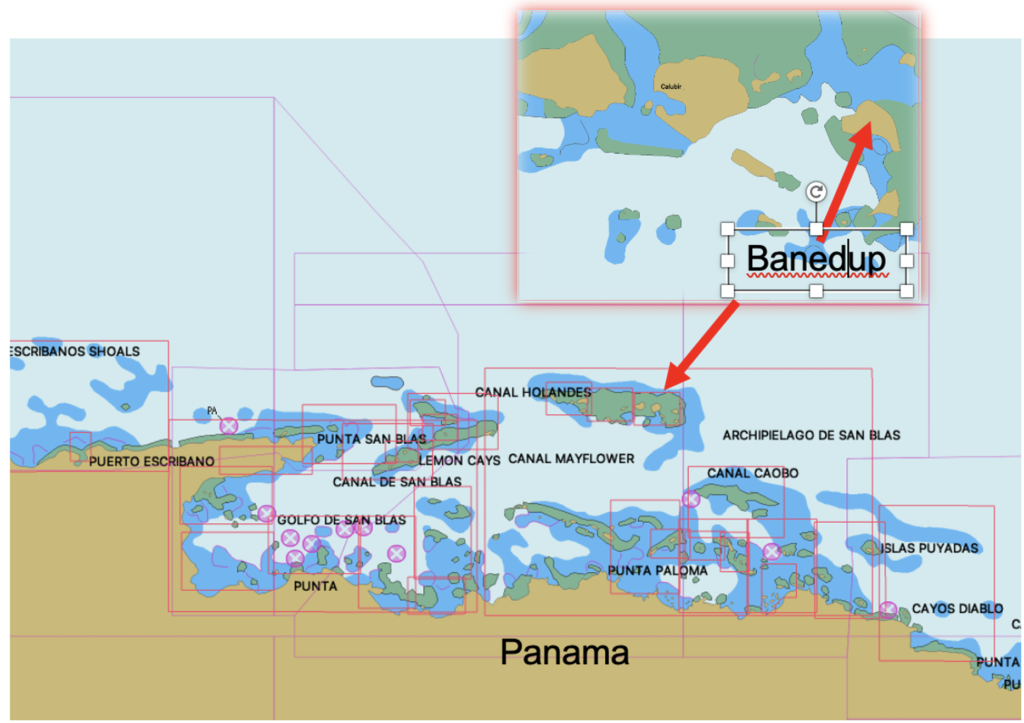
The island Paderup lies in the Cayos Holandeses, a part of the San Blas Islands to the North of Panama. The Cuna people live there in a reasonable sovereignty, protected by the UN. They don’t recognize possession of land, so it makes the threshold to start a business lower. Also the taxes are much lower.
Lost in paradise
The weeks became months. Especially in the periods when their friends left to Panama to make some money, she was on her own. You can feel lost then.
Luckily on the other side of the island Ibin and his family already started a settlement, as the real first pioneers. (more later about how Ibin settled here). They did not have much time for a chat, since they were busy from dawn to dusk to get settled with a their project.
But there were good moments. Janet told: “Sometimes people from another island visited. That was nice and they became friends. But to be honest, it was lonesome in paradise. A real highlight was when their friends sent her a present for her birthday, brought by a charter yacht that could pass by on her very birthday. All guests from that ship sung a great Happy Birthday To You.”
Paradise regained
They opened a shop with the groceries and vegetables from the weekly lancha. More and more yachts came, attracted by this new ‘supermarket on a deserted island’.
The first charter yachts chose this island to anchor and to let the people visit paradise, making fun with the hammock and played volley with the volleyball net just in the water of the beach.
Slowly the regular coming and going of guest started. Janet started getting used to the life here.

Next to the groceries, they also invested in a satellite connection and that becomes a powerful attraction since there is no other stable internet connection here. It gives us the opportunity to send you this blog from the sun covered bench with a view on the beach and the palmtrees and the sea. We stay connected to you, just as Janet stays connected to her friends.
Also in paradise, we are really happy when connected to each other.
- Next week: Three years ago Ibin and his family started a settlement on the other side of this island. The real pioneers! You will see, they made a good start. But what are the plans for the future?


